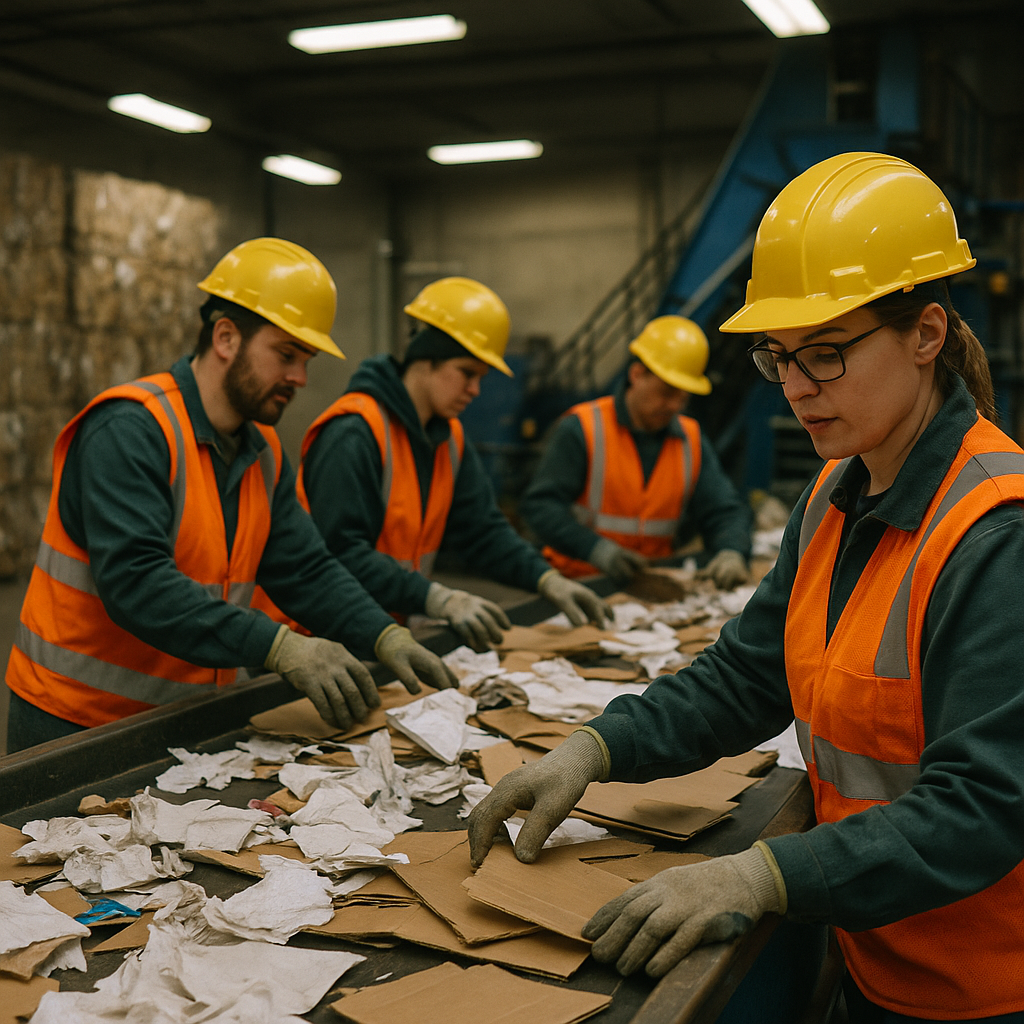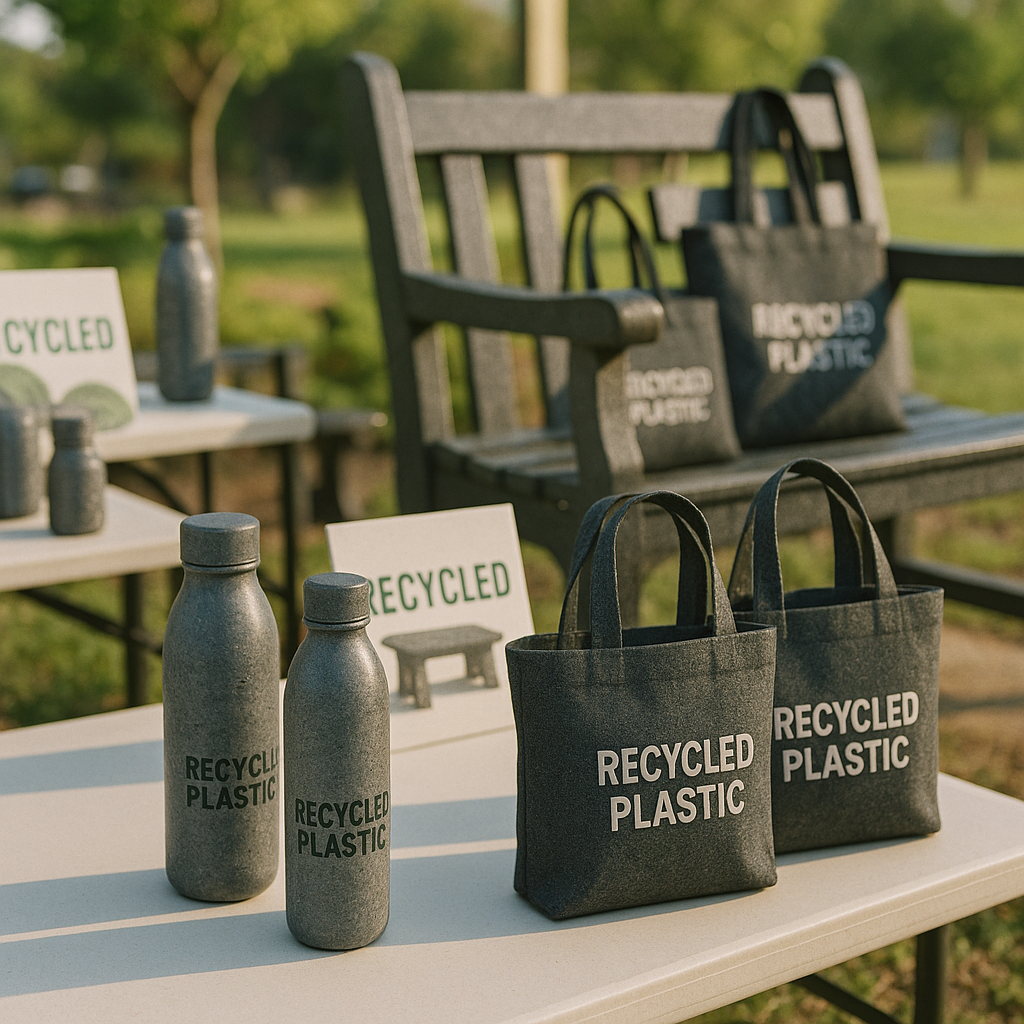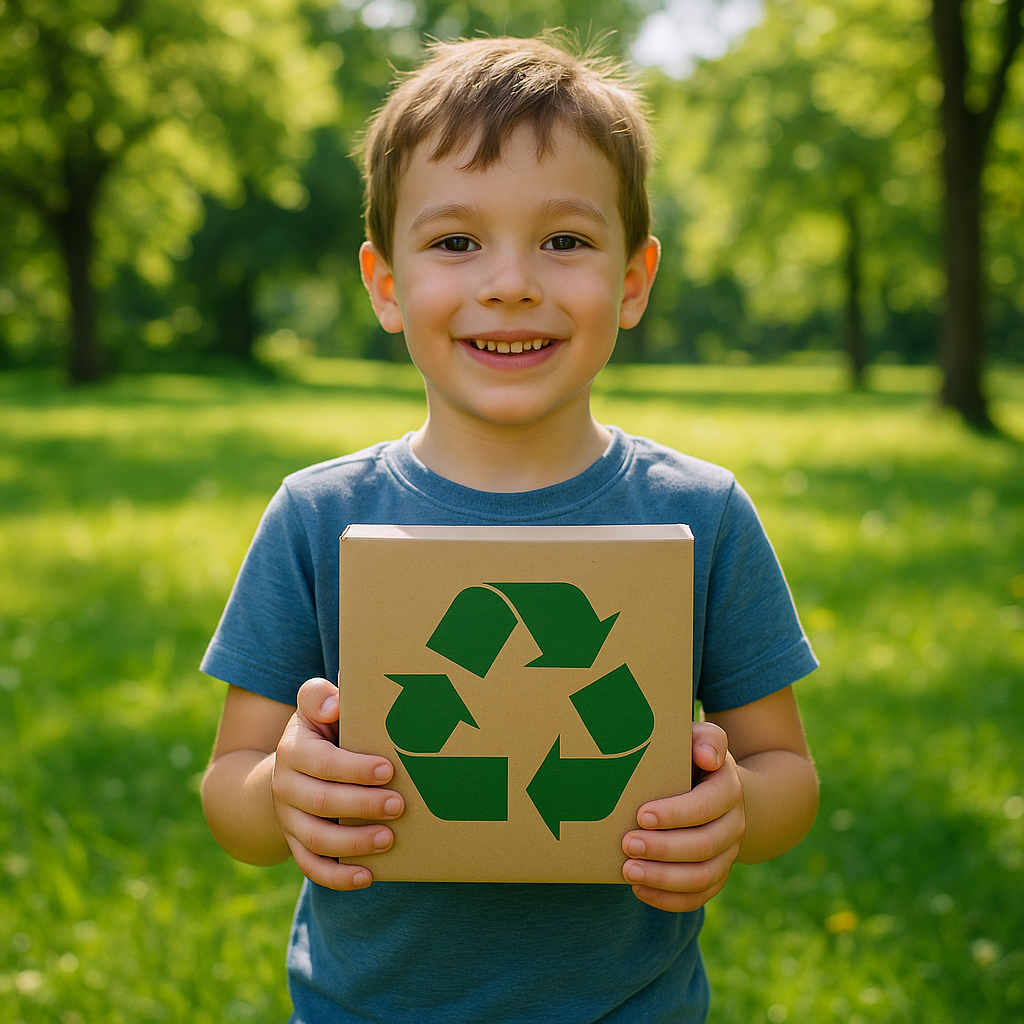5901 Botham Jean Blvd, Dallas, TX 75215
Common Waste Recycling Products: A Quick Guide for Beginners
August 26, 2025Every day, we encounter products that can be revitalized through recycling. Paper, plastics, glass, and metals constitute the bulk of recyclable materials in our waste stream. When these common items are diverted from landfills, they become valuable resources for creating new products.
Paper recycling is one of our most successful recovery efforts. Newspapers, magazines, cardboard boxes, and office paper can all be transformed into new paper goods. This process saves trees, reduces water use, and significantly decreases energy consumption. A single ton of recycled paper saves enough energy to power the average American home for six months.
Plastic bottles and containers are another major category of recyclable waste. From water bottles to detergent jugs, these items can be processed into everything from clothing fibers and carpet to new containers and outdoor furniture. Recycling plastics requires far less energy than manufacturing new plastic from raw materials.
How Are Paper and Cardboard Recycled?

Paper and cardboard recycling involves several transformative steps that convert used materials into new products. The process begins with collecting these materials from homes, businesses, and recycling centers. Collection trucks transport them to sorting facilities where workers separate different types of paper products.
Once sorted, the paper and cardboard are shredded into small pieces and mixed with water and chemicals to create a slurry-like pulp. This pulp passes through screens and filters that remove contaminants like plastic film, staples, and glue. Special machines then remove printing inks through a flotation process, where air bubbles lift the ink away from the paper fibers.
The cleaned pulp moves to the paper machine, where it is spread onto a mesh screen to drain excess water. It then passes through heated rollers that press and dry the material into large rolls of recycled paper. These rolls become the foundation for new paper products.
Newspapers transform into unexpected items, including phone books, egg cartons, cereal boxes, and building insulation. Magazines, with their glossy finishes, serve a special purpose in the recycling process: the clay in this paper helps remove inks from other paper products during pulping.
Cardboard boxes follow a similar recycling path. The corrugated material is broken down and reformed into new shipping boxes, paperboard packaging for food and consumer goods, and sturdy paper bags. Office paper typically becomes tissue products, paper towels, printing paper, and writing materials.
Each ton of recycled paper saves approximately 17 trees, 380 gallons of oil, and 7,000 gallons of water. Paper can be recycled five to seven times before the fibers become too short and weak for further processing.
Most communities now accept a wide variety of paper products for recycling. Check local guidelines, as some items, like greasy pizza boxes or waxed cardboard, may not be recyclable in all areas. The paper recycling industry has seen significant progress, with nearly 80 percent of paper mills in the United States now using recycled paper to create new products.
| Year | Paper Recycling Rate (%) |
| 2023 | 67 |
| 2022 | 67.9 |
| 2021 | 68 |
| 2020 | 65.7 |
| 2019 | 66.2 |
| 2018 | 68 |
| 2017 | 65.9 |
| 2016 | 67.2 |
| 2015 | 66.8 |
| 2014 | 65.2 |
| 2013 | 63.6 |
| 2012 | 65 |
| 2011 | 66.4 |
What Products Are Made from Recycled Plastics?

Recycled plastics serve as valuable raw materials for a wide range of new products. When sorted properly and processed through specialized recycling facilities, these materials find new uses in surprising and practical ways. The transformation process varies depending on the type of plastic, with PET (#1) and HDPE (#2) being among the most commonly recycled varieties.
PET plastic bottles—the clear containers used for water and soft drinks—undergo a remarkable transformation. After cleaning and processing, recycled PET becomes the base material for carpet fibers, clothing (particularly polar fleece jackets and performance wear), and fiberfill insulation for sleeping bags and winter jackets. The polyester fibers created from recycled PET are virtually indistinguishable from those made from virgin plastic, yet require significantly less energy to produce. Some fabrics can contain up to 100% recycled material, meaning your favorite outdoor gear might have started as a collection of water bottles.
HDPE plastic, identified by the #2 recycling symbol and commonly used for milk jugs, detergent bottles, and shampoo containers, transforms into equally useful products. This sturdy plastic becomes deck boards, outdoor furniture, playground equipment, and plastic lumber that resists rotting and requires no maintenance. HDPE can also be recycled into new non-food containers, recycling bins, and agricultural pipes. Its durability makes it particularly valuable for outdoor applications where exposure to the elements is a concern.
The recycling process requires careful separation of plastic types. PET and HDPE must be processed separately, as mixing different plastics compromises the quality of the recycled material and can render entire batches unusable. This need for separation explains the importance of proper sorting at recycling facilities.
Despite the versatility and value of recycled plastics, recycling rates remain concerningly low. In 2018, only about 8.7% of all plastic waste was recycled. This low percentage represents a significant missed opportunity, considering the environmental benefits of plastic recycling and the growing market demand for recycled plastic products.
Beyond the common PET and HDPE examples, recycled plastics also appear in less obvious applications. Recycled plastic finds its way into automotive parts, including car interior components and seatbelts. Manufacturers use it for office supplies, electronics casings, and packaging materials. Some innovative companies even transform plastic waste into construction materials like bricks and roofing tiles, offering sustainable building alternatives.
| Material | Common Products |
| PET | Carpet fibers, clothing (e.g., polar fleece jackets), fiberfill insulation, new PET bottles and jars, automotive parts |
| HDPE | Plastic lumber, picnic tables, benches, recycling bins, piping, playground equipment, outdoor furniture |
The market for recycled plastic products continues to grow as more consumers demand sustainable options and manufacturers seek to reduce their environmental impact. Each plastic item properly recycled reduces landfill waste and decreases the need for virgin plastic production, making the simple act of recycling an impactful environmental choice.
How Are Glass and Metal Recycled?
Glass containers are among the most efficiently recycled materials in our waste stream, with unique properties that make them perpetually reusable. When recycled, glass undergoes a transformation process that completely preserves its integrity. The journey begins with collection and sorting by color—clear, green, and brown—as different colors cannot be mixed without compromising quality.
Once sorted, the glass is crushed into small fragments called cullet. Cullet has a significantly lower melting point than the raw materials used to make new glass, requiring approximately 30% less energy during manufacturing. For glass producers, using cullet offers multiple benefits: it reduces furnace temperatures, extends equipment life, decreases dust emissions, and lowers carbon dioxide output from chemical reactions.
The glass recycling process creates a truly closed-loop system. A glass bottle can be recycled, processed, and back on store shelves as a new container in as little as 30 days. Remarkably, this cycle can continue indefinitely without any loss of quality or purity—a property few other packaging materials can claim.
Metal Recycling: A Significant Energy Saver
Metal recycling stands out for its extraordinary energy efficiency, particularly with aluminum. The recycling process for aluminum cans is straightforward but impactful: collected cans are shredded, cleaned, and melted down to form large ingots. These ingots are then rolled into sheets and manufactured into new cans or other aluminum products.
The energy savings from aluminum recycling are striking. Recycling aluminum cans saves approximately 95% of the energy required to produce aluminum from bauxite ore. To put this in perspective, the energy saved by recycling a single aluminum can could power a television for three hours. These energy savings directly reduce carbon emissions and lessen environmental impact.
Steel cans, which are made of tin-coated steel, follow a different recycling path. These cans are magnetically separated from other recyclables due to their ferrous content. After separation, the steel is melted down in furnaces reaching temperatures of about 2,700°F. Recycled steel can be transformed into various products, including car parts, building materials, appliances, and even new cans.
Steel recycling yields impressive benefits as well, saving about 60-74% of the energy needed for virgin steel production. Each ton of steel recycled conserves 2,500 pounds of iron ore, 1,400 pounds of coal, and 120 pounds of limestone, while significantly reducing mining waste and water use.
| Material | Energy Savings (%) | Energy Saved per Tonne (kWh) |
|---|---|---|
| Aluminium | 95% | 14,000 |
| Steel | 60%-74% | 1,400 |
| Plastic (PET) | 76% | 7,200 |
| Paper | 60% | 4,100 |
| Glass | 30% | |
| Beryllium | 80% | |
| Lead | 75% | |
| Iron and Steel | 72% | |
| Cadmium | 50% |
Both glass and metal recycling demonstrate how properly managed materials can remain in productive use rather than ending up in landfills. Their recycling processes create substantial environmental benefits while preserving valuable resources for future generations. For consumers and businesses, participating in glass and metal recycling represents one of the most effective ways to reduce environmental impact while supporting more sustainable manufacturing systems.
What Are Some Innovative Companies Using Recycled Materials?

The corporate landscape is evolving as businesses across industries increasingly integrate recycled materials into their products. These innovative companies are not only reducing their environmental footprints but also creating high-quality items that resonate with consumers.
Technology giant Dell exemplifies this commitment by incorporating recycled plastic into their computer monitors and desktop products, diverting significant amounts of plastic from landfills while maintaining their high performance standards.
In the athletic wear industry, Adidas and Nike have made substantial investments in sustainable manufacturing. Adidas launched their “Three Loop Strategy,” which involves recycling plastic waste, designing shoes for remaking, and using biodegradable materials, while Nike integrates recycled plastic into their popular sportswear lines.
Patagonia remains a pioneer in sustainable business practices. Since their first sustainability commitment in 1986, they have continuously expanded their efforts. Their clothing now includes materials from recycled bottles and worn-out garments. Their Worn Wear program encourages customers to repair, reuse, and recycle, extending product lifespans and minimizing waste.
Beauty brand Garnier demonstrates that sustainability can extend beyond the product itself by using recycled plastic in their packaging and working toward CO2-neutral manufacturing facilities, addressing multiple environmental concerns simultaneously.
While major corporations make headlines with sustainability initiatives, smaller innovative companies are making significant contributions as well. WeWOOD crafts stylish watches from reclaimed wood, offering a unique product with minimal environmental impact. Coral Eyewear creates glasses frames from recycled fishing nets and plastic waste, tackling ocean pollution while producing fashionable eyewear.
Notable examples include Solgaard, which developed Shore-Plast™ material from 100% recycled plastic waste collected from beaches and waterways, transforming it into various products like distinctive hexagonal watches with biodegradable straps. Husqvarna introduced garden hoses with 65% post-consumer recycled plastic parts to their Ecoline range, promoting sustainability in everyday gardening tools.
Open Funk showcases innovation in kitchen appliances with their blender designed to use everyday glass jars. Beyond being repairable and recyclable, its outer casing is constructed from 100% recycled plastic, highlighting how sustainability can be incorporated into household items.
An Australian company, Robovoid, demonstrates the versatility of recycled materials in construction applications. Their system, made from 100% recycled plastic, fills voids in walls, floors, tanks, and retaining walls, reducing concrete usage by up to 75% and improving thermal efficiency.
These diverse examples illustrate how recycled materials are integrated across industries, from fashion and technology to construction and home goods. As more companies recognize both the environmental and business benefits of sustainable manufacturing, we can expect continued innovation in the use of recycled materials.
| Company | Recycled Material | Applications |
| Dell | Recycled Plastic | Computer monitors and desktops |
| Adidas | Recycled Plastic | Shoes, sportswear |
| Nike | Recycled Plastic | Sportswear |
| Patagonia | Recycled Polyester | Clothing |
| Garnier | Recycled Plastic | Packaging |
| WeWOOD | Reclaimed Wood | Watches |
| Coral Eyewear | Recycled Fishing Nets, Recycled Plastic | Glasses Frames |
| Solgaard | 100% Recycled Plastic | Watches, Other Products |
| Husqvarna | 65% Post-consumer Recycled Plastic | Garden Hoses |
| Open Funk | 100% Recycled Plastic | Blender Casings |
| Robovoid | 100% Recycled Plastic | Construction Applications |
Conclusion: The Impact and Future of Recycled Products

The transformation of waste materials into new products is a key strategy in building a sustainable future. Recycling conserves valuable natural resources, significantly reduces energy consumption compared to using virgin materials, and prevents pollution that would otherwise harm ecosystems and communities. Although substantial progress has been made with certain materials—such as increasing paper recycling rates—there is room for improvement, especially with plastics, where recovery rates are still lagging.
The market for recycled products continues to grow as more companies recognize both the environmental and economic benefits of using recycled materials in their manufacturing processes. This growth is further boosted by increasing consumer demand for sustainable products, creating a positive feedback loop that strengthens the circular economy. Every individual recycling effort, combined with innovative manufacturing approaches, contributes to a larger system where materials are recycled rather than discarded after a single use.
Your recycling choices make a tangible difference in this sustainability journey. If you need assistance with recycling solutions for your business or organization, contact Okon Recycling at 214-717-4083. Together, we can build a more circular economy that benefits both our environment and future generations.
